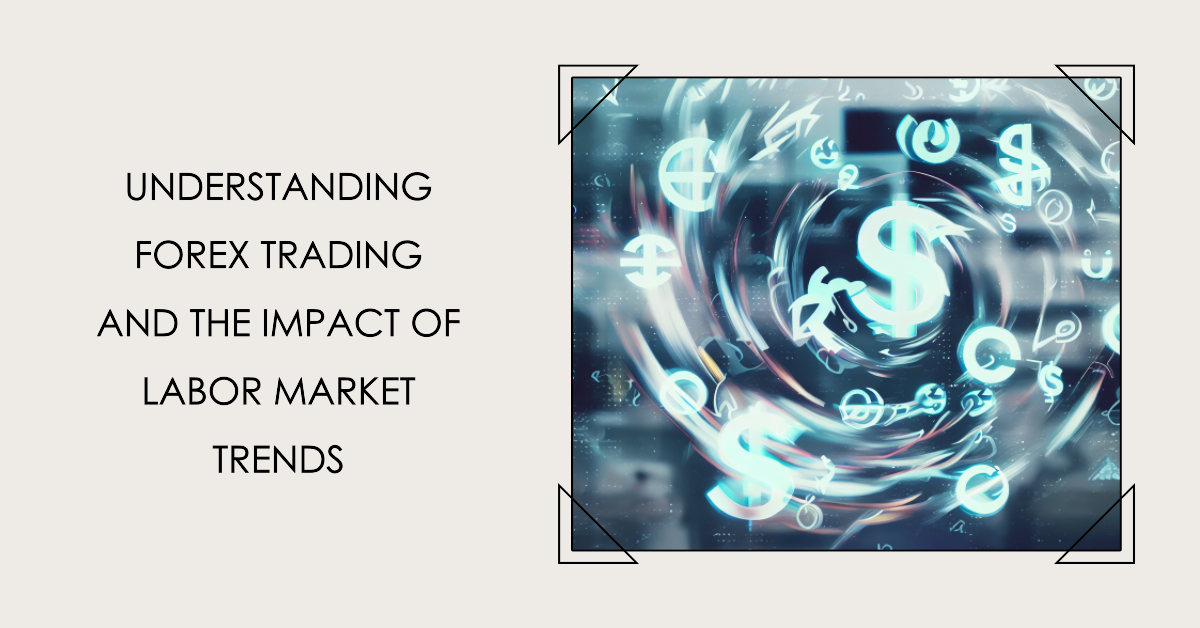
Understanding Forex Trading and the Impact of Labor Market Trends
- Jonny Smith
- August 1, 2023
- Forex Trading For Beginners, Forex Trading Strategies
- Best_forex_broker, ECN_Forex, forex_brokers
- 0 Comments
Introduction
If you’ve ever wondered how the world’s currencies keep spinning around in a massive, ever-changing whirlwind, you’ve entered the realm of Forex trading. On the surface, it might look like a complex beast, but at its heart, it’s an essential part of our global economic pulse. Now, add labor market trends into the mix and we’ve got ourselves quite an interesting narrative.
In this article, we’ll dive into the world of Forex trading, dissect labor market trends, and unravel the intriguing intersection between the two. So, buckle up and get ready for an engaging journey that promises to enlighten you and perhaps even inspire the budding trader within you!
Comprehensive Understanding of Forex Trading
The ABCs of Forex Trading
Forex trading is essentially the exchange of one currency for another. Whether you’re vacationing in Paris and swapping your dollars for euros, or a multinational corporation converting profits from overseas, you’re a participant in the world’s largest financial market.
What Moves the Market?
Three main factors often dictate the dance of currencies: political and economic stability, interest and inflation rates, and last but not least, market psychology and speculation. A nation’s political health can make its currency rise like a phoenix or sink like a stone. Interest and inflation rates have a seesaw relationship with currency value. As for market psychology and speculation, well, the heart wants what it wants, even in Forex trading!
Economic Indicators and Forex Trading
Economic indicators such as the Gross Domestic Product (GDP), Consumer Price Index (CPI), and Balance of Trade (BoT) often set the tempo for the Forex market. These figures are the pulse and blood pressure of an economy, signaling its overall health and steering the currency ship.
Deep Dive into Labor Market Trends
Understanding Labor Market Trends
Labor market trends refer to changes in employment landscapes – the rise and fall of job opportunities, shifts in wages, and the overall health of the job market. And like it or not, these trends can pack quite a punch in the Forex market.
Labor Market Indicators
Key indicators to understand labor market trends include the unemployment rate, the job creation rate, and wage growth. Think of them as the forecast of the job market, guiding us towards the future of a nation’s workforce.
Labor Market Trends: A Global Perspective
The labor market landscape can vary dramatically between developed and developing economies. Meanwhile, technological advancements are reshaping labor markets globally, impacting Forex trading in ways we’ve never seen before.
Intersection of Forex Trading and Labor Market Trends
Labor Market Trends and Currency Value
Unemployment rates and wage growth have significant impacts on a country’s currency value. Unemployment can lead to an economic slowdown, weakening the currency. On the other hand, wage growth often signifies a robust economy, which can strengthen the currency.
Case Studies: Historical Instances
Forex traders closely monitor labor market statistics. For instance, the U.S. non-farm payroll data is a significant monthly economic report that can cause substantial movements in the Forex market. Another example is the Brexit saga, where uncertainty around the UK’s labor market had significant implications for the value of the pound.
Labor Market Trends: A Predictive Tool in Forex Trading
Understanding labor market trends can offer a predictive edge in Forex trading. Fluctuations in these trends can be indicative of economic shifts that influence the value of a country’s currency, providing a vantage point for traders.
Future Projections: Labor Market Trends and Forex Trading in the Post-COVID Era
COVID-19: A Game Changer
The global pandemic has shaken the world, causing seismic shifts in labor markets and, by extension, Forex trading. Unprecedented unemployment rates and the rapid transition to remote work have brought about new trends to consider.
Emerging Trends and Forex Trading
The rise of remote work and digitization are likely to impact labor markets in ways we are just beginning to understand. Similarly, the transition towards a green economy is creating new job markets, with potential implications for Forex trading.
The Role of Government Policies
Government policies and international trade agreements will undoubtedly play a crucial role in shaping labor markets and influencing Forex trading in the future. Traders who keep their fingers on this pulse stand to gain an edge in the market.
More Case Studies: Historical Instances
Let’s talk about historical instances that further highlight the impact of labor market trends on Forex trading. Remember when the Great Recession hit in 2008? Unemployment rates in the U.S. skyrocketed, reaching 10% in October 2009. The result? The U.S. Dollar took a significant hit.
Or how about the Eurozone debt crisis? High unemployment rates in countries like Greece and Spain had a domino effect, shaking the stability of the Euro and causing significant currency fluctuations.
These case studies illustrate that no matter the country or the currency, labor market trends can play a pivotal role in Forex trading.
Labor Market Trends: A Predictive Tool in Forex Trading
Labor market trends, as we’ve explored, are more than just numbers or passing news. For Forex traders, these are critical pieces of information that could offer a predictive edge in the market.
Rises or falls in unemployment, changes in wage patterns, or trends in job creation are often indicative of larger economic shifts. These shifts can significantly influence a country’s currency value.
For example, a decrease in unemployment rates or an increase in wage growth can signal an economy’s strength. Such positive indicators can bolster a currency’s value, providing Forex traders with insights for potential trades.
On the flip side, negative labor market trends can point to economic weakness and potential depreciation in a currency’s value. By understanding these trends, Forex traders can make more informed predictions and, potentially, more profitable trades.
Future Projections: Labor Market Trends and Forex Trading in the Post-COVID Era
COVID-19: A Game Changer
There’s no denying that COVID-19 has turned our world upside down. The shockwaves of the pandemic are significantly felt in labor markets, and by extension, Forex trading.
We’ve seen an era of record-breaking unemployment rates, swift layoffs, and an unparalleled transition to remote work. These new trends have ushered in a new era for labor markets and are playing an increasingly influential role in the Forex market.
Emerging Trends and Forex Trading
As the world adjusts to a post-pandemic era, new labor market trends are emerging, and Forex traders should take note. The rise of remote work and the digital economy are likely to impact labor markets, and by extension, Forex trading, in ways we are just beginning to understand.
Similarly, the transition towards a green economy is creating new types of jobs and potentially reshaping labor markets. As the demand for “green jobs” increases, it’s likely we’ll see ripple effects in the Forex market.
The Role of Government Policies
As we navigate this new era, government policies and international trade agreements will undoubtedly play a crucial role in shaping labor markets. Policies around employment, wages, and worker protections, as well as broader economic policies, can directly influence a country’s labor market.
This, in turn, can affect currency values and Forex trading. Traders who stay informed about such policy changes and understand their implications on labor markets will have a competitive edge in the Forex market.
Conclusion
Understanding the intersection of Forex trading and labor market trends isn’t an easy task, but it’s a challenge worth embracing for those intrigued by the world’s largest financial market. Whether you’re a novice trader, a curious observer, or someone fascinated by economic trends, this exploration should have shed some light on this fascinating, intricate relationship.
Always remember, as labor markets continue to evolve in response to societal changes, technological advancements, and global crises, so too does the Forex market. Keeping an eye on these trends provides a valuable lens to view, understand, and navigate the often tumultuous waters of Forex trading.
In the end, the Forex market is like a vast ocean – constantly moving, filled with undercurrents and waves. But with the compass of knowledge and understanding, you can navigate these waters, ride the waves, and hopefully steer towards success.








